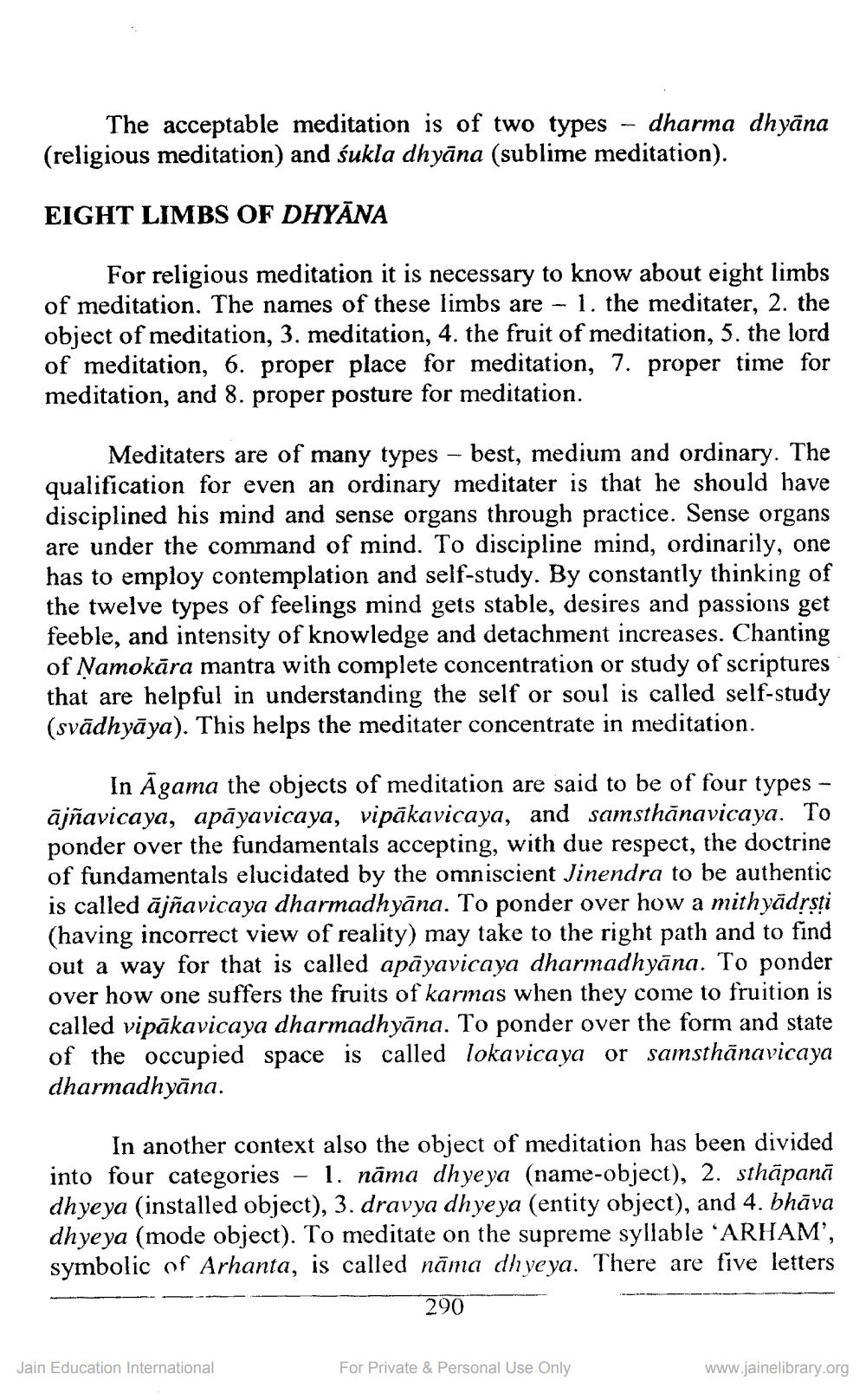________________
The acceptable meditation is of two types - dharma dhyāna (religious meditation) and śukla dhyāna (sublime meditation).
EIGHT LIMBS OF DHYĀNA
For religious meditation it is necessary to know about eight limbs of meditation. The names of these limbs are - 1. the meditater, 2. the object of meditation, 3. meditation, 4. the fruit of meditation, 5. the lord of meditation, 6. proper place for meditation, 7. proper time for meditation, and 8. proper posture for meditation.
Meditaters are of many types – best, medium and ordinary. The qualification for even an ordinary meditater is that he should have disciplined his mind and sense organs through practice. Sense organs are under the command of mind. To discipline mind, ordinarily, one has to employ contemplation and self-study. By constantly thinking of the twelve types of feelings mind gets stable, desires and passions get feeble, and intensity of knowledge and detachment increases. Chanting of Ņamokāra mantra with complete concentration or study of scriptures that are helpful in understanding the self or soul is called self-study (svādhyāya). This helps the meditater concentrate in meditation.
In Āgama the objects of meditation are said to be of four types – ājñavicaya, apāyavicaya, vipākavicaya, and samsthānavicaya. To ponder over the fundamentals accepting, with due respect, the doctrine of fundamentals elucidated by the omniscient Jinendra to be authentic is called ājñavicaya dharmadhyāna. To ponder over how a mithyādrsti (having incorrect view of reality) may take to the right path and to find out a way for that is called apāyavicaya dharmadhyāna. To ponder over how one suffers the fruits of karmas when they come to fruition is called vipākavicaya dharmadhyāna. To ponder over the form and state of the occupied space is called lokavicaya or samsthānavicaya dharmadhyāna.
In another context also the object of meditation has been divided into four categories – 1. nāma dhyeya (name-object), 2. sthāpanā dhyeya (installed object), 3. dravya dhyeya (entity object), and 4. bhāva dhyeya (mode object). To meditate on the supreme syllable ‘ARHAM’, symbolic of Arhanta, is called nāma dhyeya. There are five letters
290
Jain Education International
For Private & Personal Use Only
www.jainelibrary.org




